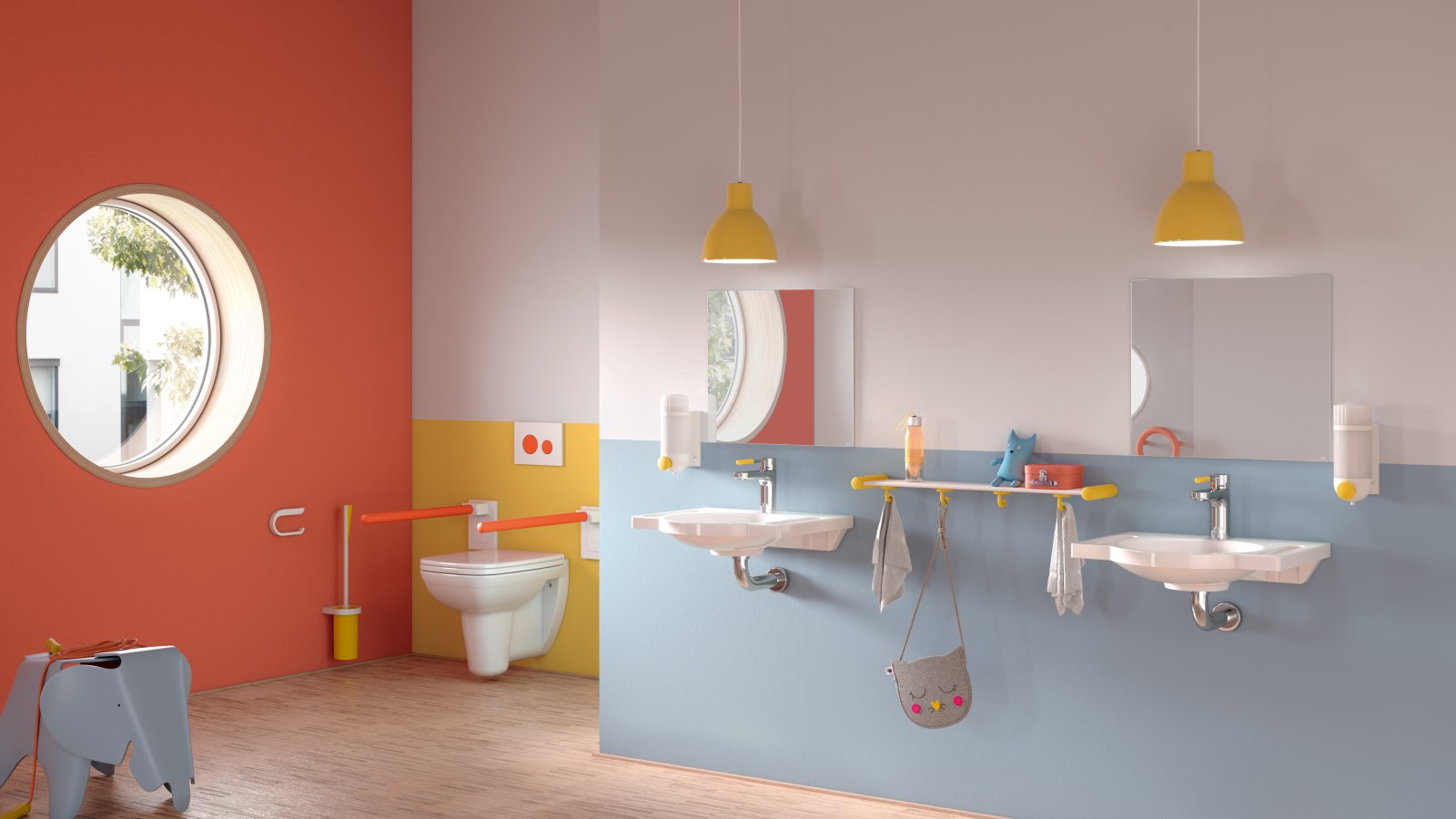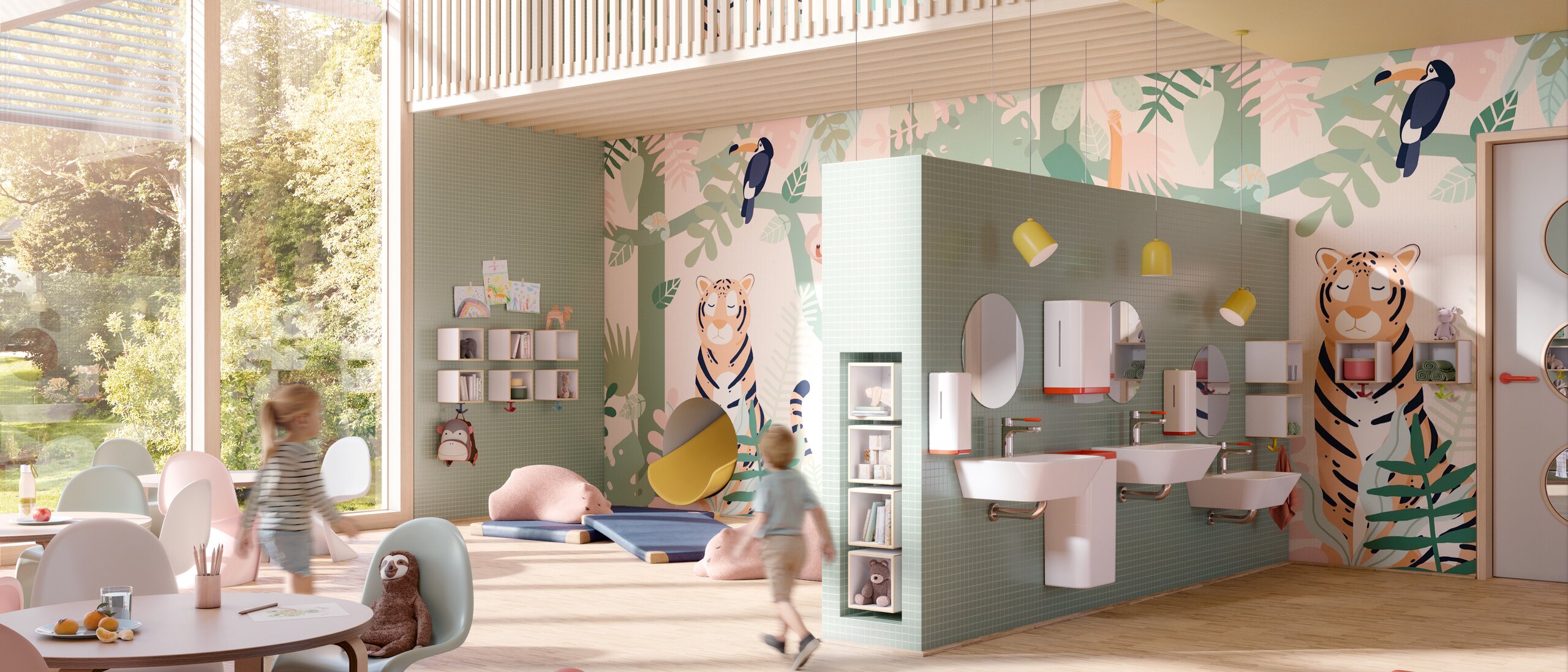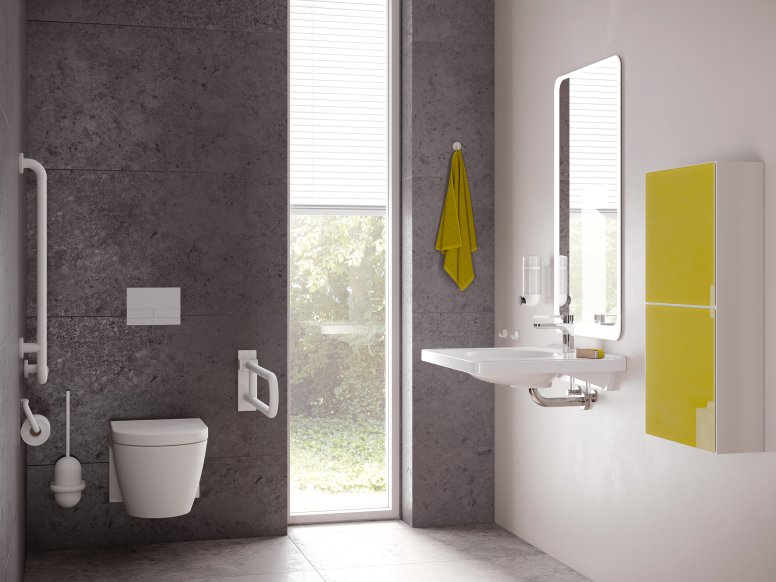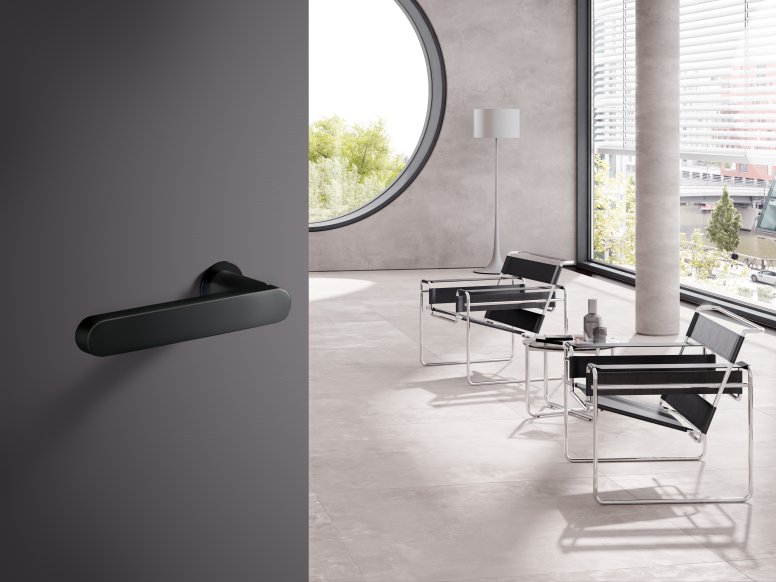HEWI MAG / Knowledge
Four tips for more hygiene in the kindergarten
Valuable tips for planners, architects, and day-care centre managers
You can't make an omelette without breaking eggs – this also applies to hygiene in kindergartens and day-care centres. A clinically sterile environment can never be achieved there. But that is not necessary at all. Nevertheless, the most important basic hygiene rules must be observed in day-care centres and kindergartens in order to prevent the spread of infections. In this article, you will find out what you need to bear in mind.
Viruses and bacteria are part of everyday life in day-care centres and kindergartens. Teaching children basic hygiene rules is therefore part of the daily routine. Not only children but also staff members need to adhere to hygiene rules. Especially when handling food. Whether it is washing hands before eating, hygienic food handling, or health in general – all these topics should have top priority in day-care centres and kindergartens. In many places, a hygiene plan is therefore a good idea in the day-care centre. Especially since the children often have to fight diseases, the spread of which must be prevented. The following tips – arranged according to the most important rooms in the day-care centre – help to ensure hygiene in the kindergarten.
1. More hygiene in the cloakroom
The entrance area is essential for hygiene in the kindergarten. The cloakroom plays an important role in this. It is the calling card of the educational institution. If possible, the shelf for the children’s outerwear should be place so that there is no direct contact between the individual items of clothing. If possible, coat hooks should be placed at least 20 cm apart. Even better would be 40 cm or partitions between the hooks. For existing coat hooks that are too close together, use only every second hook if possible. Each child should use their individual hook, which is best identified by appropriate labelling. A shelf for additional items of clothing (caps, scarves, street shoes) is recommended. This is because the children’s shoes are also changed in the entrance and cloakroom area.
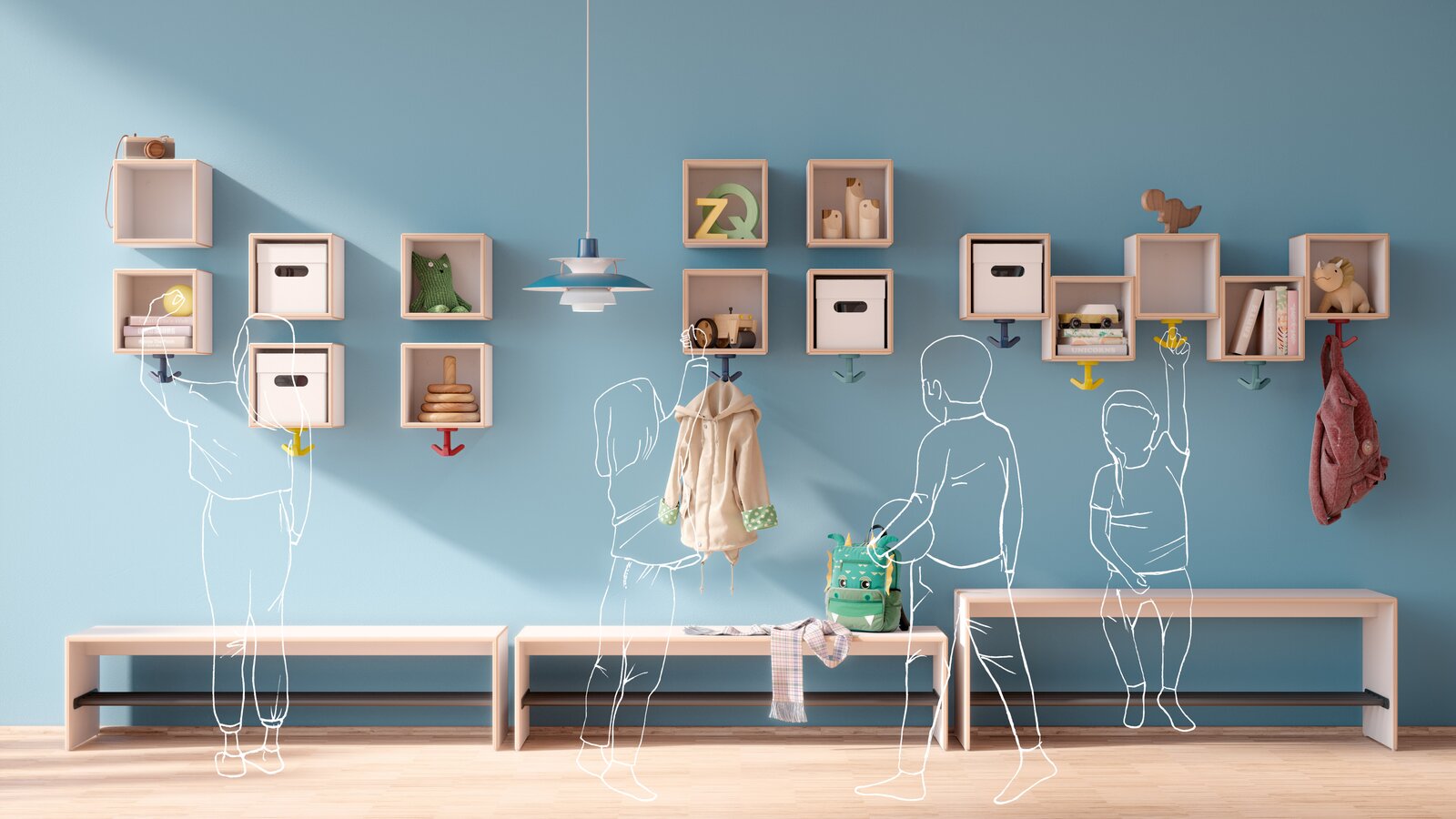
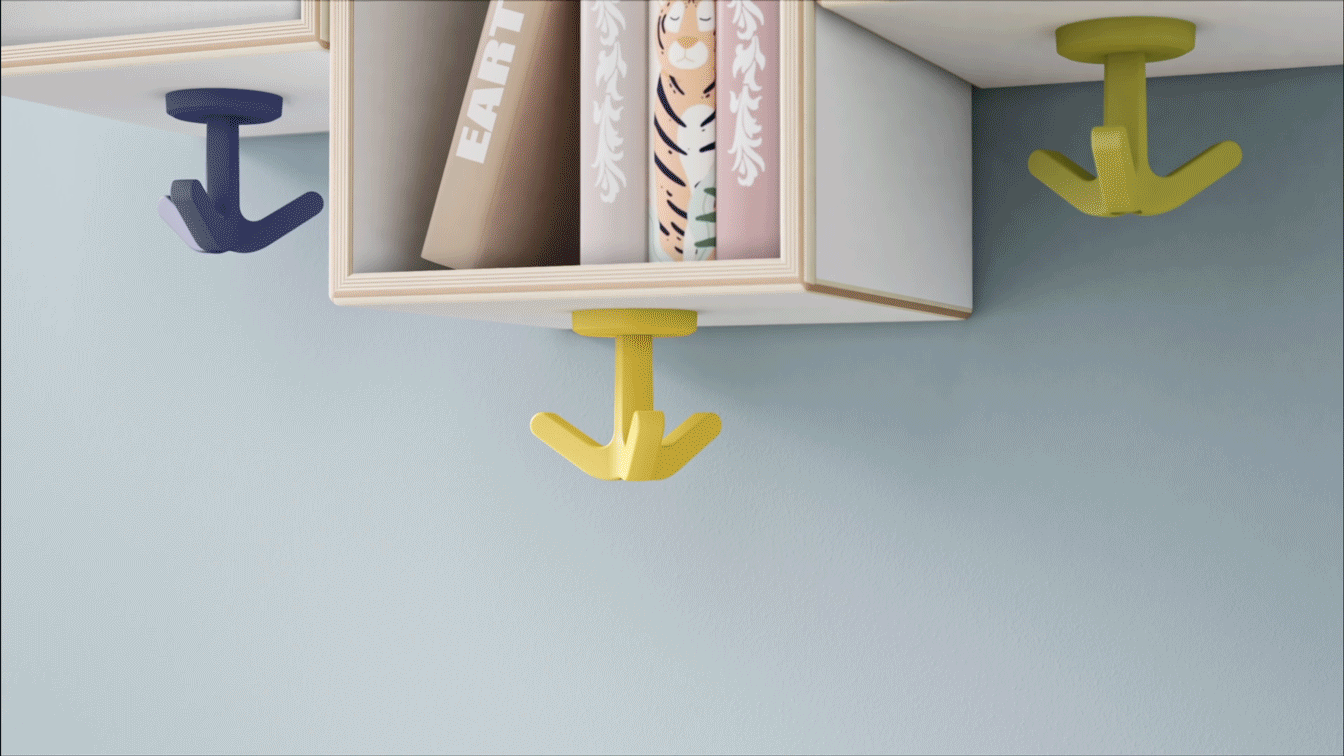

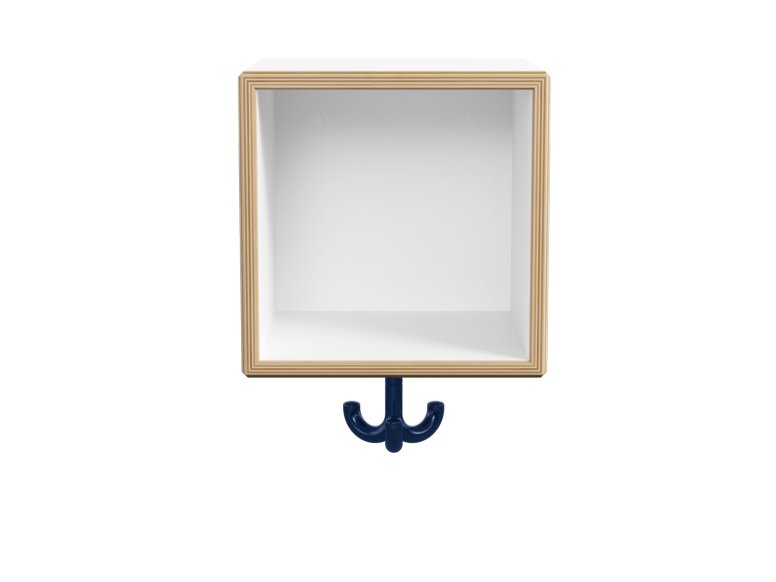
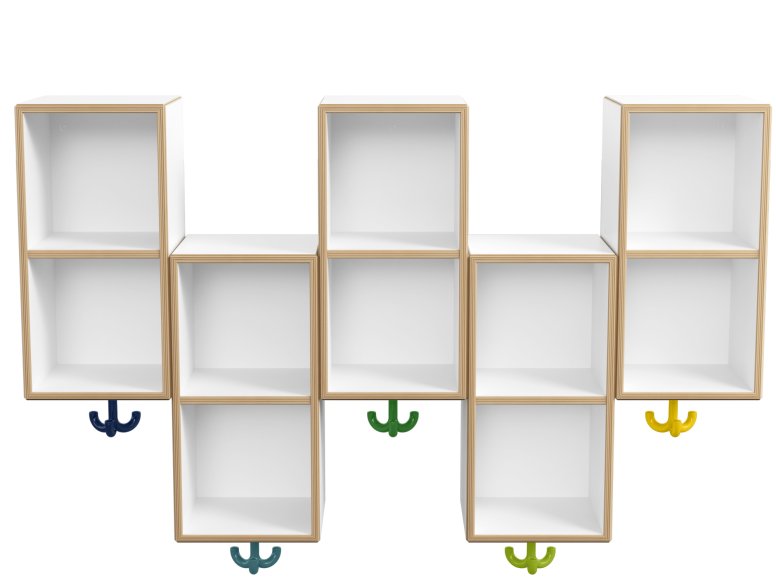
2. Improved hygiene in cosy corners and play areas
In the group area of many day-care centres and kindergartens, there are play areas and cosy corners where those responsible for the day-care centre – as well as planners and architects – should pay particular attention to hygiene measures. Hygiene is so important in this area because contact with materials and play equipment is particularly intensive. For example, sofas, mattresses, and seating/lying surfaces should be provided with suitable, removable, and washable covers. This is the only way to clean them regularly and is beneficial for hygiene. If products cannot be washed or disinfected – for example upholstery – it may even be necessary to dispose of them in individual cases.
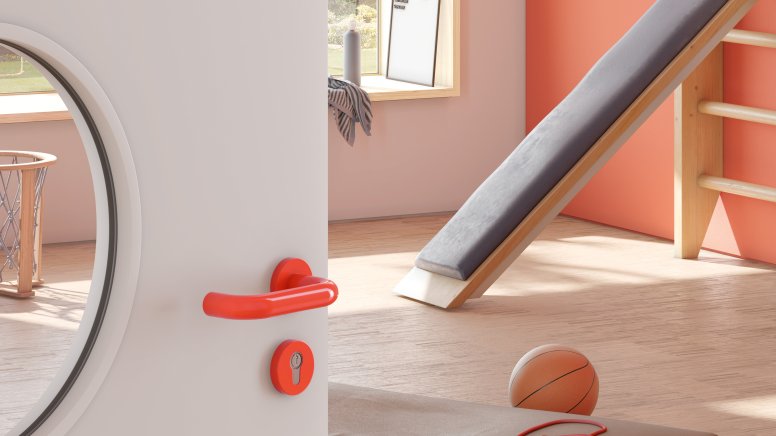
3. Day-care hygiene in sleeping and rest rooms
In some day-care centres or kindergartens, a sleeping and resting room must be planned. Duvets, mattresses and pillows must be cleaned at least once a year and after a change of persons. Mattresses should have a liquid-tight mattress cover. These can thus be quickly cleaned or disinfected when dirty. Easy-to-clean storage space for the children’s clothes is also available here.
4. Hygiene in the sanitary area of the day-care centre
In the sanitary area, hygiene in day-care centres and kindergartens takes on a particularly high priority. For towels, for example, it is advisable to use disposable towels. Shared towels are to be avoided, especially in the staff toilet. If operators decide to use textile towels, they should be used for specific persons and stored without them touching. This is possible with the cloakroom and handtowel holder from HEWI. The holder can be colourfully decorated by the children with the appropriate pictograms. Towels should also be washed at least weekly at 60°C. In the crèche area, when using textile towels, it is important to replace them after each use. Small children cannot be expected to use only their own towels.
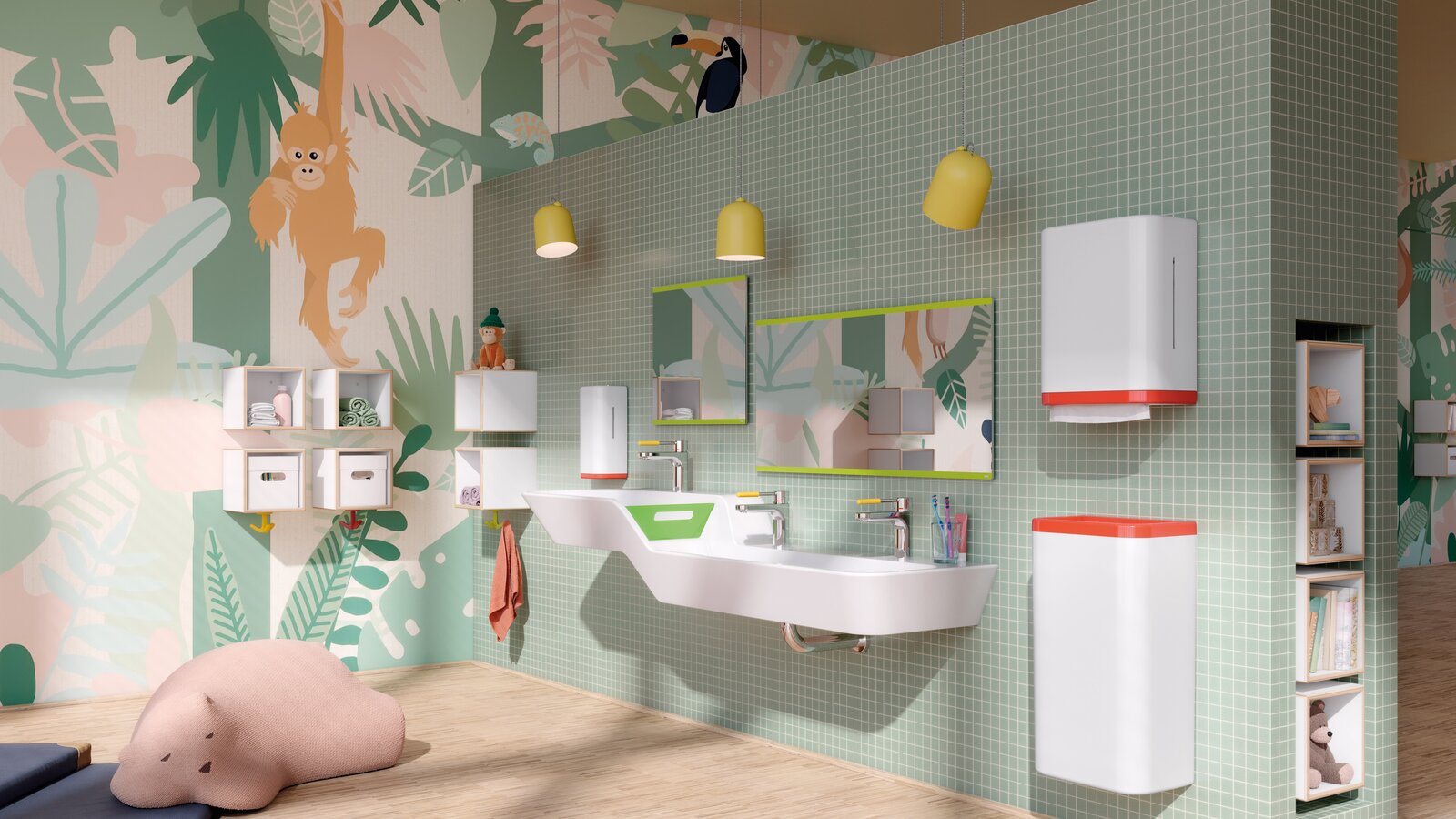
Learning hand hygiene from childhood
With the help of routines, young children can learn early on, in which situations they should wash their hands. Washing hands is compulsory before eating, after using the toilet, after coming home, and after touching animals. Songs help to internalise the routines and, above all, to achieve sufficient length when washing hands (at least 20 to 30 seconds). Washing your hands can be a lot of fun with the system fittings from HEWI: The handle element of the single-lever washbasin mixer can be designed in the 16 HEWI colours, including child-friendly colours such as aqua blue or apple green. In addition, practical tips on the topic of hand hygiene can be found. For example, on the page Hygiene for Kids an initiative of the Institute for Hygiene and Public Health at the University of Bonn. However, the challenge is often not in obtaining information or imparting hygiene tips. In many places, the necessary products are lacking. Another product that encourages children to wash their hands are the child-friendly washbasins from HEWI. The row washbasins with graduated heights are particularly well suited for day-care centres because they are adapted to the children’s anatomy. Children of different sizes can wash their hands at the washbasin suitable for them. Dirt from finger or acrylic paints can be easily removed. Further information on the child-friendly washbasin can be found in our article.
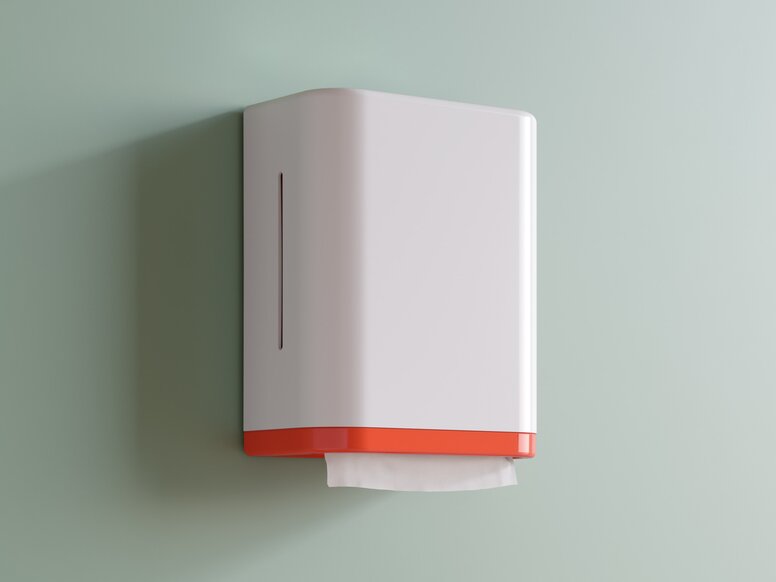
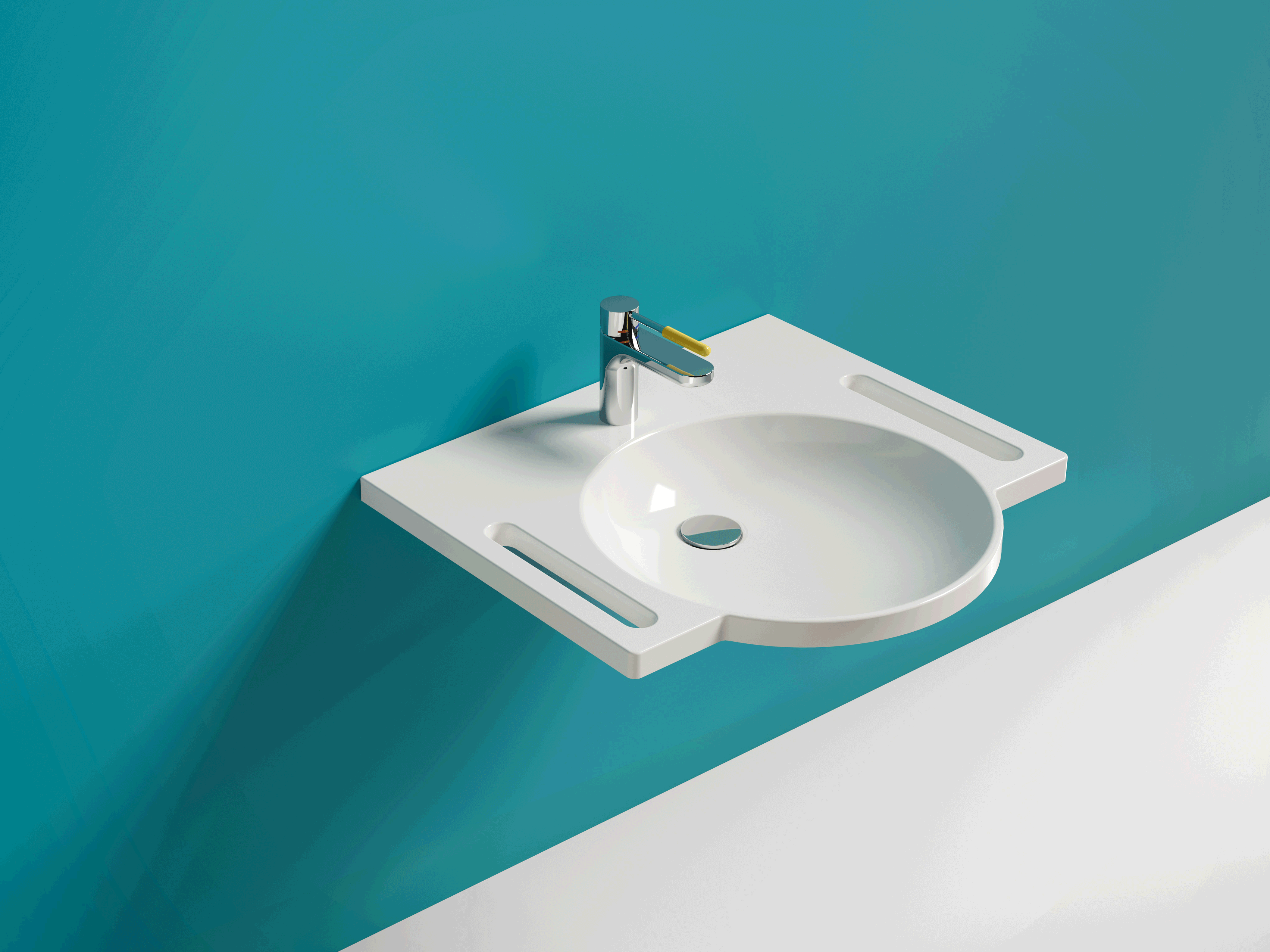
Hygienic sanitary equipment in day-care centres
Sanitary rooms for children must above all be practical, easy to clean, and safe. The products of HEWI are therefore tailored to the needs of small children. With 477/801, HEWI has created a range that is perfectly adapted to the requirements of day-care centres and kindergartens for sanitary products suitable for children. The product range includes accessibility products (e.g. hinged support rail and shower stool) as well as dispenser products and wastebins. The products are made of high-quality polyamide and feel pleasantly warm. The soap dispenser can be filled with commercially available liquid soap and easily dispensed with a push button. However, the cleaning staff must clean the dispensers before filling them. Individual elements of the range such as the push button can be equipped in 16 HEWI colours. Among them, you will find a calming steel blue or a warm ruby red. Also available are paper towel dispensers. These are much more hygienic than electric blowers for drying hands because disease-carrying aerosols in the ambient air can be avoided. You can find more information in our article on this topic.
